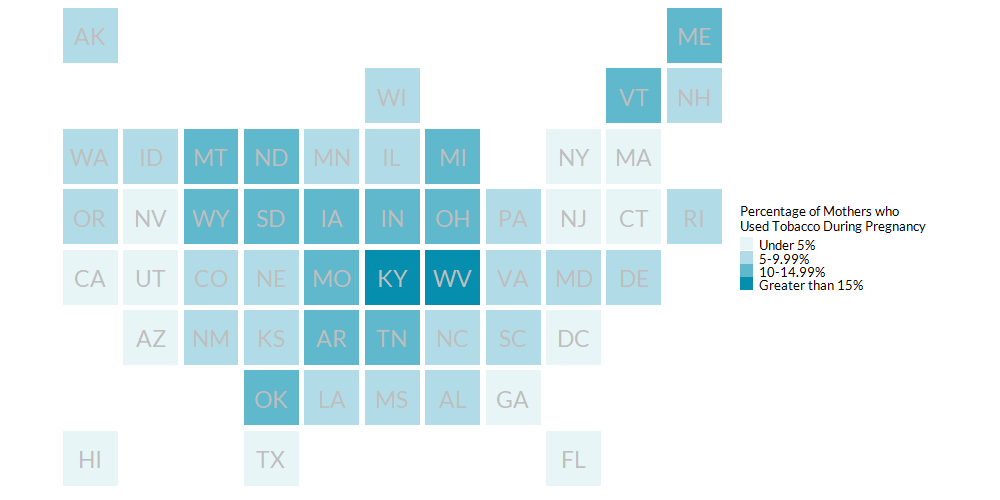
Indicator Data by State
Tobacco 2021
Tobacco products that contain nicotine can harm mothers and infants when used during pregnancy. For example, tobacco use during pregnancy can increase the risk of preterm birth, low birthweight, and birth defects. Not all mothers have equal access to information about tobacco use and supports to help them stop using during pregnancy. Structural racism and disinvestment in communities of color can drive such inequities. Tobacco companies have also historically marketed their products to communities of color and under-resourced communities, contributing to differences in tobacco use across groups. The table below presents data disaggregated by race and ethnicity to help us identify inequities and work toward solutions that promote equity.
Home Visiting as Part of the Solution. Evidence suggests that prenatal home visiting helps reduce tobacco use among participating mothers. Home visiting programs offer several supports in this area, including education about the harms of smoking, motivational interviewing and other strategies to help parents stop tobacco use, and referrals to outside programs that offer tobacco use counseling.
Tobacco Use During Pregnancy by State, 2019

| State | All Groups | American Indian or Alaska Native | Asian | Black or African American | Hispanic | Native Hawaiian or Other Pacific Islander | Multiple Races | White |
Notes: The original data source reports Hispanic origin separately from race variables; therefore, the population included in each race category does not exclude people of Hispanic origin. NA indicates when the data do not meet the criteria for confidentiality constraints. More information can be found at https://wonder.cdc.gov/wonder/help/Natality.html#Assurance%20of%20Confidentiality
Definition: Tobacco use during pregnancy refers to the percentage of mothers who used tobacco during pregnancy in 2019. These percentages exclude births where tobacco use is categorized as “not stated” or “not reported” from the total number of births (i.e., the denominator).
Source: U.S. Department of Health and Human Services, Centers for Disease Control and Prevention, National Center for Health Statistics, Division of Vital Statistics. (2020). Natality public-use data 2007–2019 [CDC WONDER Online Database, July 2021]. https://wonder.cdc.gov